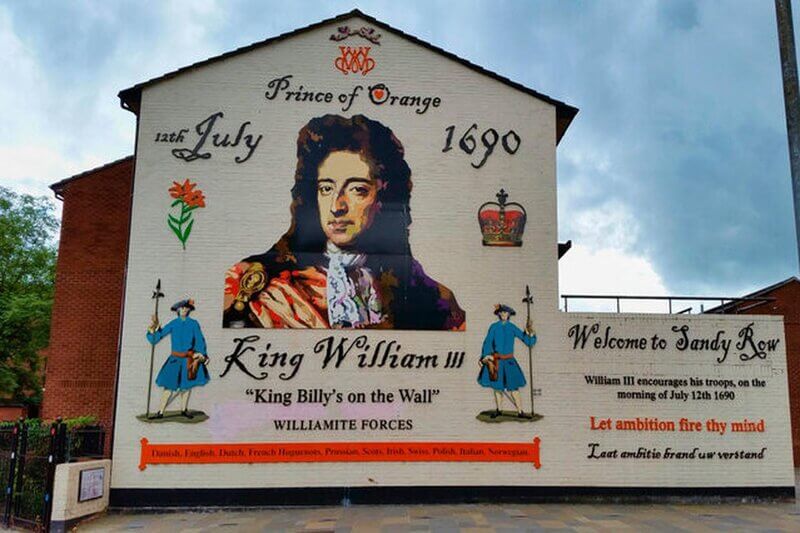Sandy Row is located a short stroll away from Shaftesbury Square, which is Stop 9 on the Belfast hop on hop off tour. The area is one of oldest neighbourhoods in the City, which is widely known for its strong Protestant & Loyalist traditions with Orangeism and the 12th of July festivities.
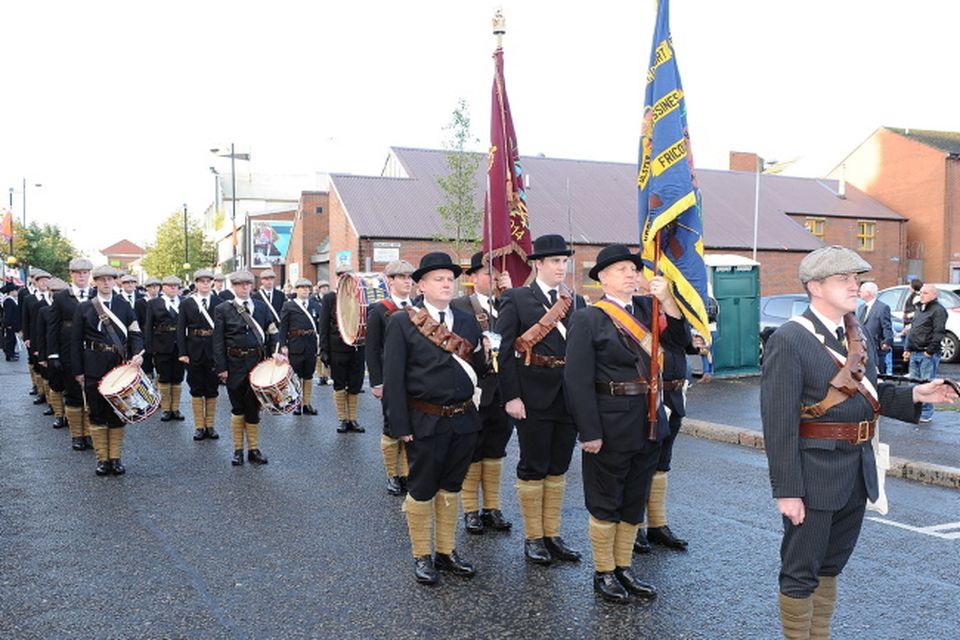
Early History
Sandy Row was originally a small village on the outskirts of Belfast. It was named after the sandy road that led to the village, which was left by the visable tidial waters of the river lagan during the early 1800s.
Local Legend
In 1690 King William of Orange and his men passed through Sandy Row on route to the battle of the boyne, entering Sandy Row over whats known today as the Boyne Bridge, which is the northward entrance to Sandy Row.
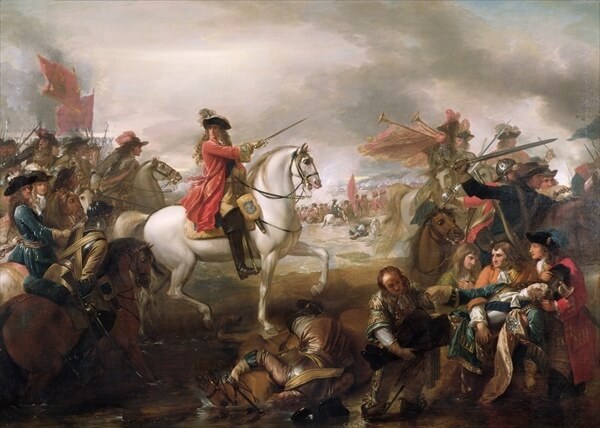
It is believed King William and his men rested at the southern entrance to Sandy Row, where the orange hall resides today.
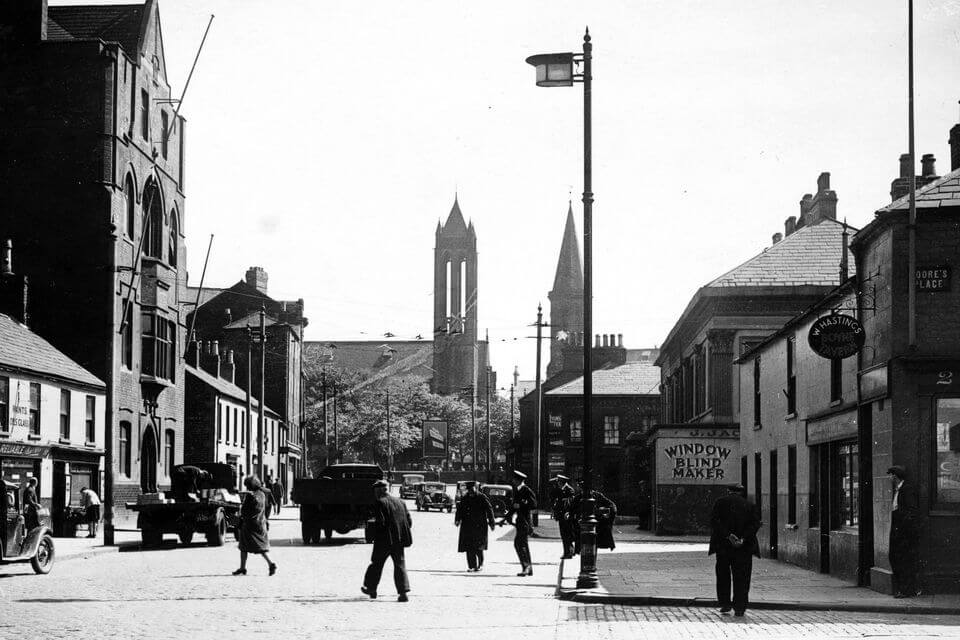
Industrial Revolution
The area grew rapidly during the 18 & 19th century, as people moved to the city to work in the shipyard, rope works, local tobacco factory, and of course the booming linen industry.
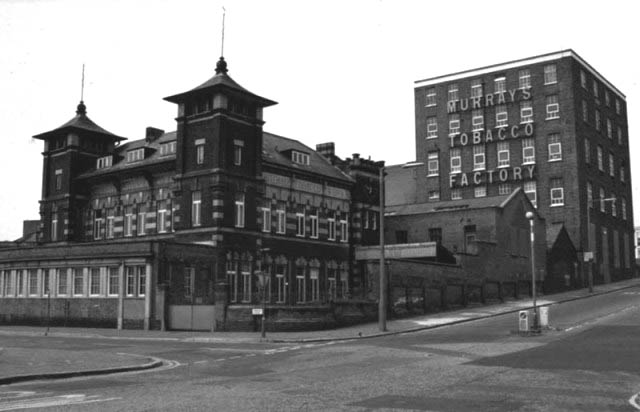
Much like the nearby Shankill Road & Falls Road, the population of Sandy Row grew rapidly. Becoming a vibrant, working-class community, with many local businesses and shops.
Early 1900's Sandy Row

During the 19th century, Sandy Row was a popular shopping district, with 127 shops and businesses operating within the street by the beginning of the 20th century.
Many people from all over Belfast came to the area for shopping until the Troubles began in the late 1960s.
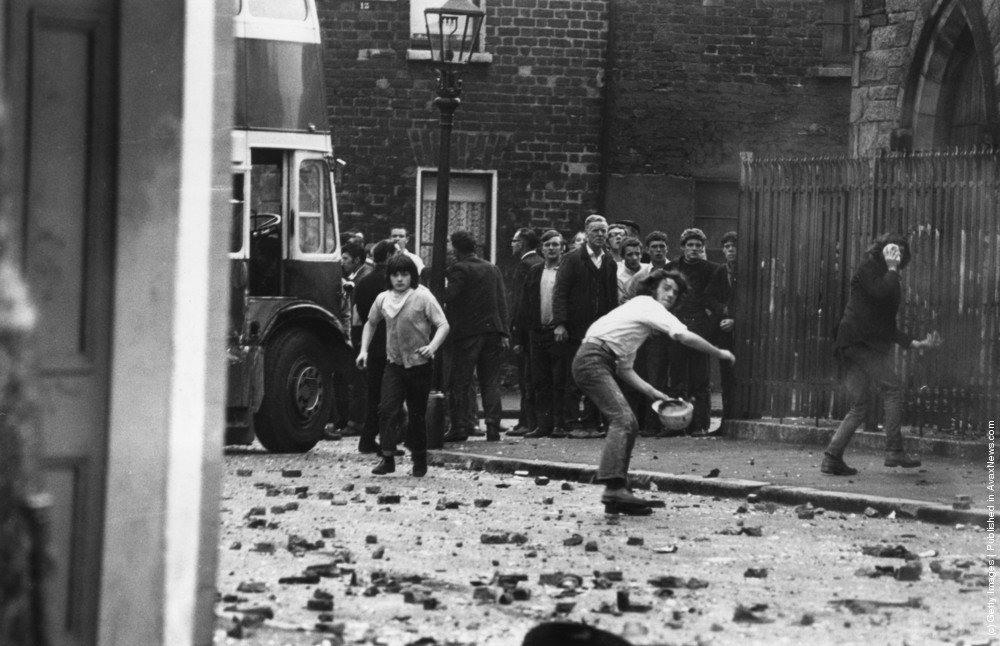
During the 19th and 20th-centuries, there was much sectarian violence and brawling between the Sandy Row Protestants and Catholics from nearby Pound Loney in the Lower Falls Road.
The Ulster Defense Association (UDA) had a strong presence in the area during The Troubles, in the early 1970s they initiated several assaults on Durham Road, a region mainly populated by Catholics that is sandwiched between Sandy Row and Falls Road, leaving four Catholics killed in the attacks.
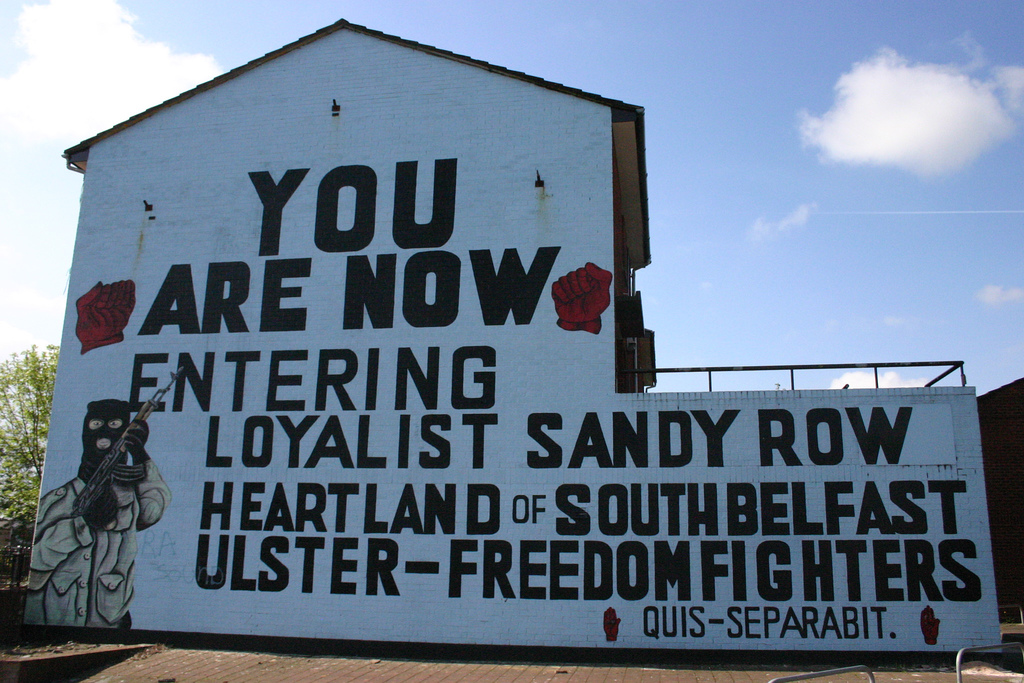
On 30 January 1976, the Provisional Irish Republican Army (IRA) detonated a car bomb outside the Klondyke Bar on the corner of McAdam Street.
This resulted in the death of one middle-aged Protestant civilian, John Smiley, and caused severe injuries to many people inside the pub, including a female bartender who lost one eye. The Klondike Bar had been in the area since 1872.

Although Sandy Row may not be as well known as other parts of Belfast when it comes to murals, there are still a few that are worth seeing.
On the corner of Sandy Row and Donegall Road, you will find The Royal Bar, where a mural of Alex "The Hurricane" Higgins can be found.
The Royal Bar was his local watering hole and he also used to live in the flats right across the road, a wreath with a snooker cue sits above the main doors in remembrance.
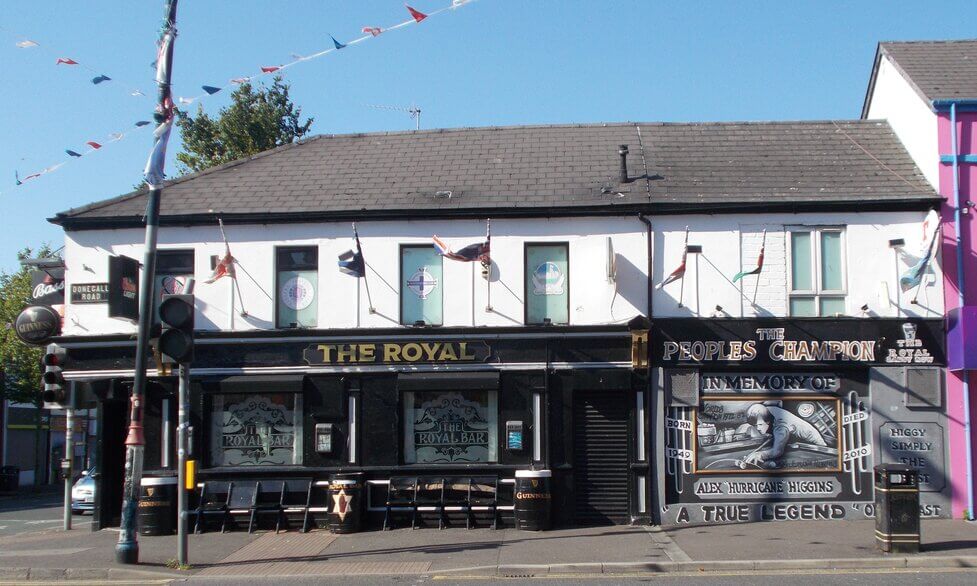
Higgins was renowned for his swiftness on the snooker table, his quickness to pocket shots, and his ostentatious style. His nickname, "Hurricane Higgins," was a result of these feats.
Furthermore, he had a distinctive way of cueing which often included contorting his body and adopting a stance that was more elevated than that of other professional players.

If you are a fan of Van Morrison, you may have also heard Sandy Row before.
In his album Astral Weeks in his song 'Madame George' he sings:
'Then you know you gotta go - On that train from Dublin up to Sandy Row'
Discover Sandy Row
*No matter what things to do in Belfast you decide upon, be sure to fully discover the city on the Belfast hop on hop off tour and make the most of your stay.


- Sandy Row FAQS -
- Walking? Open Google Maps
- Befast Hop on Hop off Bus Tour
- Travelling via Public Transport?
- Taxi's Uber -- Value Cabs
Sandy Row is located in South Belfast, about a 10-15 minute walk from the city centre. Its on the Belfast Hop on Hop off tour route
Sandy Row is a relatively safe area, it is best to visit Sandy Row during the daytime.
To be extra safe its recommended to travel on a guided Belfast bus tour, such as the belfast Hop on Hop off Bus or a Belfast black taxi tour.
Like many places, if you are unfamiliar with an area, it is best to avoid after dark.
Sandy Row is a predominately Protestant area
The mural of King William of Orange sits on North end of Sandy Row after you cross the Boyne Bridge.
Sandy Row got its name due to the high tide water mark from the inward flow of tidal waters from the River Lagan, in Irish it is known as 'Rae na Gainmhe'.
Yes - Sandy Row have one of the largest bonfires on the 11th of July every year


